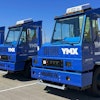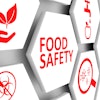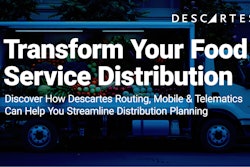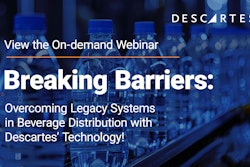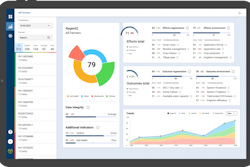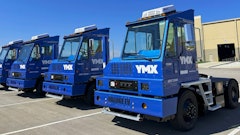
Most food suppliers understand the importance of creating and maintaining a well-functioning supply chain. The products they transport have defined shelf lives and specific transportation needs that require detailed knowledge of where the food is at any given time. This is no small task, and many companies see their supply chain needs consume a significant portion of their annual budgets.
Streamlining supply chain data collection and reporting is one way to bring those costs under control. Companies who understand this and connect with the right partners to create effective systems can improve their overall market competitiveness. It provides a significant advantage over competitors by lowering production, transportation and inventory costs.
The key to building an efficient supply chain is to create a strategy—from the C-suite to the production floor—on which everyone can agree. Here are some of the key components that will affect how your food production supply chain functions and how to choose the right partners to get you there.
Keeping supply chain costs under control
Some supply chain costs can’t be avoided, but the savviest food production companies examine these costs closely and work to optimize them. It requires an in-depth examination of processes throughout your operations and finding places where changes can be made to reduce costs. Consider these strategies to help lower costs.
Inventory management
Knowing what food products you have in your inventory is essential to running an effective food production business. Many companies spend between one-quarter and one-third of their budgets on inventory management, which makes this a logical area for changes to be made to lower those expenses. Implementing a lean inventory strategy minimizes waste and ensures your company has the proper inventory available to meet your customers’ needs without overstocking products with finite shelf lives.
One such process includes demand forecasting, which uses previously collected information to forecast what future demand may look like. Collecting that information and making it easily accessible to all decision-makers within the company can minimize unnecessary overhead. It requires buy-in from everyone in the company to be effective, but demand forecasting can be crucial to reducing supply chain costs in food production facilities.
Transportation and logistics
In the food production industry, transportation and logistics are significant budgetary line items. Making sure those areas are as streamlined as possible will help reduce your overall supply chain costs. Finding the right software package will allow you to optimize your routes and make them more dynamic, combine shipments where applicable, provide data that allows you to cube your trucks more efficiently, and make sure the loads are optimally rationalized.
Additionally, implementing a policy of collaborative logistics (bringing suppliers, carriers, and other stakeholders into the process and sharing as much information as possible) will also lower costs, as will using real-time tracking. Finally, it’s important to work with experienced third-party logistics (3PL) vendors who can devise strategies to reduce your overall costs.
Supplier relationships and negotiations
At the end of the day, food production supply chains are built on strong interpersonal relationships with suppliers. That way, when your food production company is negotiating rates and other contract terms with suppliers, there is the trust necessary to make a deal that meets everyone’s needs.
Regularly assess how suppliers are performing on key metrics like quality, reliability, and adherence to delivery schedules. If they are not performing, it may be time to find someone else who will. Find someone with whom you can build long-term partnerships based on mutual respect to achieve better terms and pricing. Finally, hone your negotiating skills to get the best terms possible, take advantage of potential discounts, and build mutually beneficial contracts.
Transformational technology
It may seem that purchasing an overarching technology solution to manage your supply chain expenses may cost more than it’s worth. However, in the long run, technology will improve the efficiency of your supply chain and reduce costs over time. In short order, your technological investment will pay for itself, especially if artificial intelligence (AI) is part of the technology you purchase. The power of AI to make data more easily accessible and allow for real-time adjustments as necessary will help bring down costs even further.
Additionally, automating repetitive and time-consuming supply chain processes like inventory management, order handling, invoicing, data entry and real-time product tracking will free up employees to focus on big picture problems that can improve the company’s bottom line. It can also allow for rapid data analysis which, when provided to decision-makers throughout the company, can provide the necessary context to make real-time decisions that will improve operational performance.
As you experience every day, the food production business is highly competitive. Any advantage you can gain may be the difference between success and failure. That’s why finding the right supply chain technology partner can help you streamline your supply chain operations, improve performance and keep your vital supply chain working so your business can thrive.


